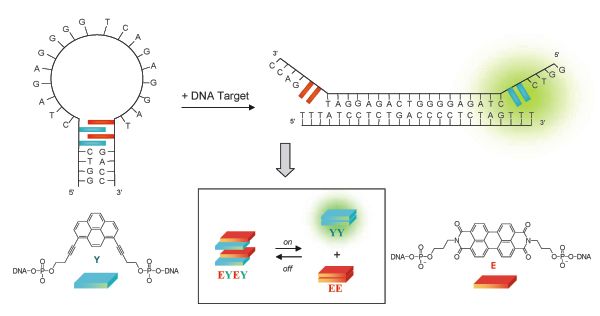|
Conventional fluorescence control is based on contact quenching or resonance energy transfer (FRET). We present here a new on/off module for signal control based on the formation of p–stacked self-assemblies. Non-nucleosidic building blocks (Y, E) form donor-acceptor aggregates in the stem region of a molecular beacon. The stacking interactions between the electron-rich alkynylpyrenes and the electron-poor perylenediimides prevents formation of pyrene dimer and, thereby, excimer fluorescence. Upon hybridization with a DNA or RNA target, excimer formation takes place. This new principle leads to very efficient quenching and should be applicable for various types of signalling systems.
This work was carried out in the group of Prof. Robert Häner.
References:
-
R. Häner, S. M. Biner, S. M. Langenegger, T. Meng and V. L. Malinovskii;
"A Highly Sensitive, Excimer-Controlled Molecular Beacon"
Angew. Chem. Int. Ed., 49, 1227-1230, (2010);
doi:10.1002/anie.200905829.
|
